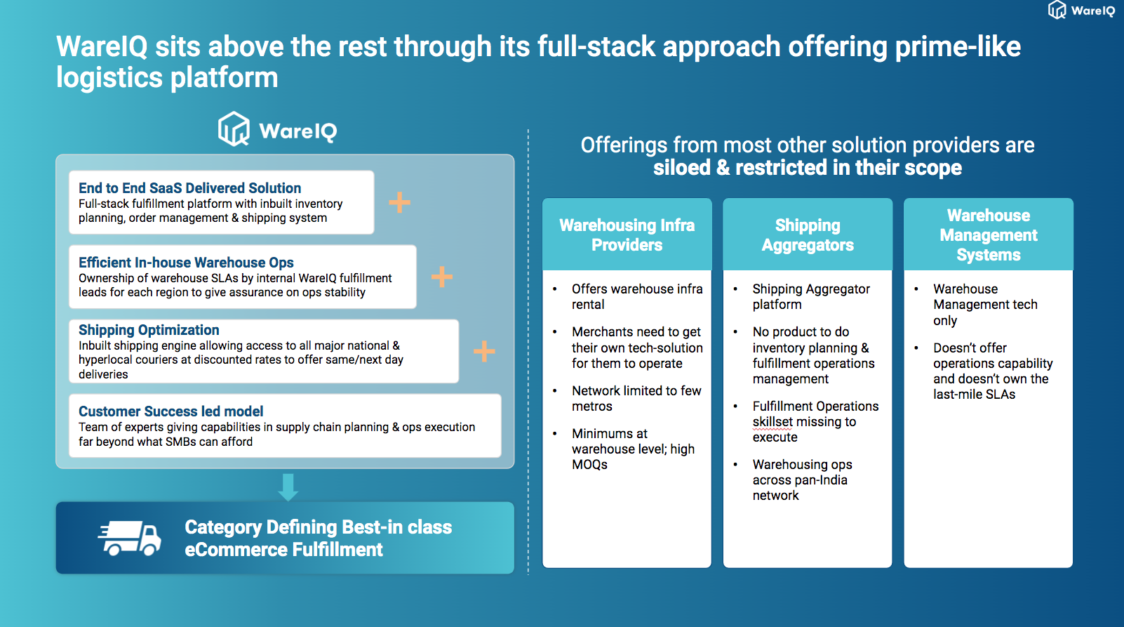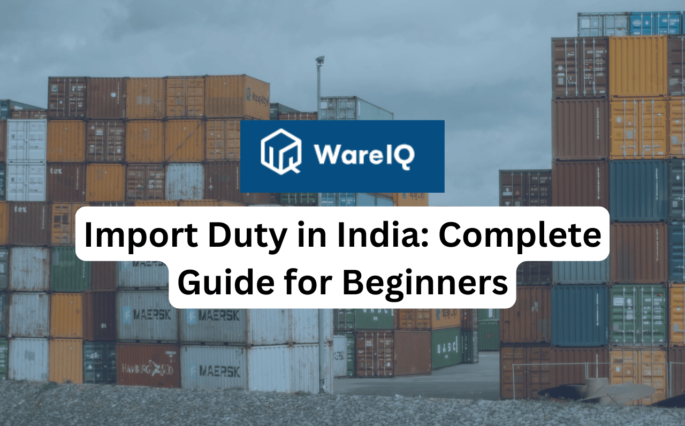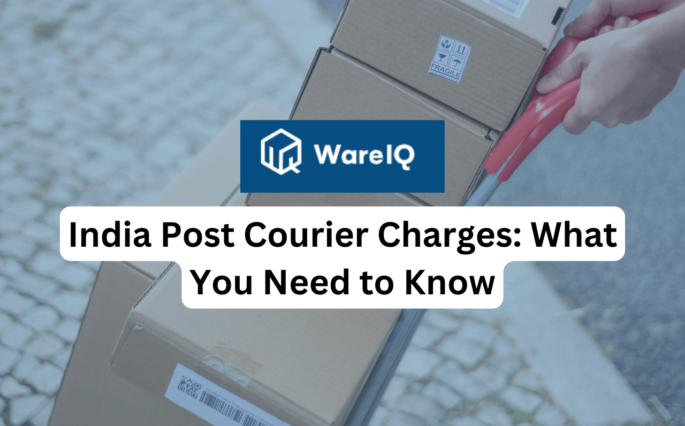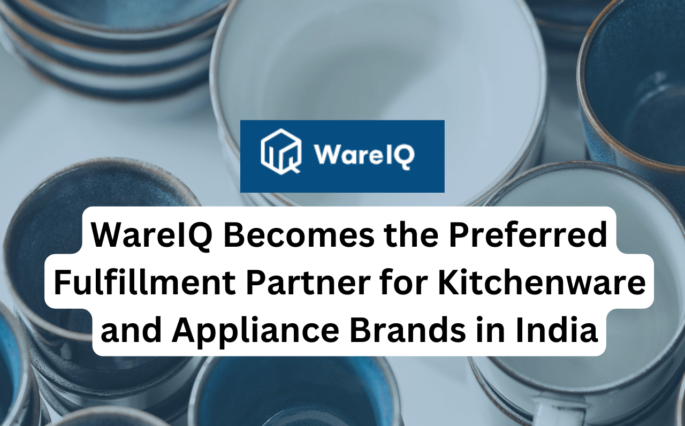What is EOQ – Economic Order Quantity? What is the Importance of EOQ for eCommerce Business in 2025?

These days, order fulfillment for eCommerce sellers has become a relatively easy task due to the emergence of multiple high-quality logistics partners with huge supply-chain networks. From picking and packing to shipping services, they are also responsible for collecting payments post-delivery and managing inventory. But in the end, the seller is in the driver’s seat so they need to determine the type of products they want to sell and price them competitively. To decide this, they need to do market research and study the demand and supply of similar products. This is where economic order quantity can help them streamline their decision making process.
Things like minimum order quantity (MOQ) and economic order quantity (EOQ) assist sellers to get an accurate estimation of batches as per their requirements while also ensuring that there is enough free space for storage as opposed to an uninformed seller who may keep placing orders to their supplier only after their inventory gets depleted.
- What is Economic Order Quantity (EOQ)?
- How is Economic Order Quantity Calculated?
- How Does Economic Order Quantity Work?
- What is the Importance of EOQ?
- Challenges of Economic Order Quantity (EOQ)
- How to Use EOQ to Improve Inventory Management in 2025?
- Conclusion
- Economic Order Quantity FAQs (Frequently Asked Questions)
What is Economic Order Quantity (EOQ)?
Economic Order Quantity (EOQ) is the appropriate order quantity for a company to purchase goods in order to reduce inventory costs such as holding charges, shortage costs, order costs, etc. Inventory management, which oversees the ordering, holding, and usage of a company’s inventory, requires the use of economic order quantity. EOQ is responsible for determining how many units a company should add to its inventory with each batch of orders, to lower the total inventory expenditure.
The EOQ model aims to ensure that the appropriate amount of inventory is ordered per batch so that neither does a company have to place orders too frequently nor have an excess amount of inventory in hand. Sellers need to understand the difference between inventory setup costs and industry holding costs. When a seller can minimize both, only then can the inventory cost be minimized.
How is Economic Order Quantity Calculated?
To calculate the EOQ for your business, you must know the components listed below:
- D: Demand Rate (Quantity Sold Per Year)
- Q: Volume per Order
- S: Ordering Cost (Fixed Cost)
- C: Unit Cost (Variable Cost)
- H: Holding Cost (Variable Cost)
- I: Carrying Cost (Interest Rate)
Order Cost
It is a variable cost. It refers to the sum of all costs associated to fulfilling the order of products from sellers to buyers. This cost includes packaging (branded packaging), shipping (branded shipping), managing, etc.
Before we arrive at the ordering cost, we will have to find the number of orders per annum. The number of orders annually can be found by dividing the ‘annual demand’ by ‘the volume per order’. The formula can be expressed as:
Numbers of Orders = Annual Demand / Volume per Order (D/Q)
Now that we know the number of orders, we need to find the annual ordering cost for each order with a fixed ordering cost (independent of the number of units- S) by multiplying the number of orders by the fixed cost. It is expressed as:
Annual Cost Order = Numbers of Orders * S
= Annual Demand / Volume per Order (D/Q) * S
Demand Rate
Demand rate is the cumulative number of units of products that a retailer sells in a year. Might from retail fulfillment, drop-shipping etc.
Holding Cost
In any business, you need to have inventory to fulfill demand. Offline businesses can store their products in a shop whereas online businesses do not have access to a physical shop. For them, holding inventory is more expensive than maintaining the website or listing their products on multichannel eCommerce selling platforms. This cost can be a direct cost that is incurred by spending on the storage of inventory or the cost of holding inventory. Holding cost includes eCommerce warehousing costs, logistics costs, securing costs, insurance costs, etc.
The per-unit holding cost is often expressed as the cost per unit multiplied by the interest rate, expressed as follows:
H = IC
The Economic Order Quantity formula is
EOQ = square root of (2*S*D)/H
How Does Economic Order Quantity Work?
Ordering a huge amount of inventory for the purpose of hoarding ultimately increases the cost which reflects in the per-unit cost of products. Conversely, ordering small amounts of inventory increases the frequency of orders which also increases the setup cost. So this is where economic order quantity helps. To make the process easier, you can try out the Economic Order Quantity Calculator. It finds out the actual quantity required which mitigates all the risks.
Example/Case Study:
Let’s speculate that a company uses EOQ to assess demand, order costs, and holding expenses per unit per year over the previous year and anticipates comparable demand next year.
If the information is as follows:
Annual Usage is 20,000 units
Ordering Costs are ₹400 rupees per order
Carrying Costs is ₹4 per unit per annum
Solution: square root of (2AO/C)
square root (2*20000*400)/4=2,000.
The EOQ is 2000 units. In case a seller is short of inventory, they need to order 2,000 units. If a seller wants to order 10,000 units which is 5 times 2,000 units then you need to multiply 2000 by 5.
Note: economic order quantity can change if any of the variables change.
What is the Importance of EOQ?
As the name suggests, economic order quantity is the economic means of ordering inventory, keeping in mind the size of the business(small scale/large scale) and increasing future demand and supply requirements. A few of the benefits of EOQ are:
- Gives sellers a figure to order and maintain their inventory
- Mitigate the risk to sellers of facing a stock shortage.
- Makes the supply-chain activities hassle-free.
- Helps eCommerce sellers as well as merchants in dropshipping.
5 Benefits of Economic Order Quantity (EOQ)
Bulk Order Discounts: Sellers can take advantage of the best bulk-order or economies-of-scale discounts offered by vendors if they plan and time their orders correctly.
Improved Order Fulfillment: When a certain item is required for a customer order, optimal EOQ ensures that the product is available, allowing you to complete the order on schedule and keep the customer satisfied. It enhances the consumer experience of your customers and possibly increases sales.
Lower Storage Costs: You should have fewer things to store when your supply effectively meets your demand. This can save you money on real estate, utilities, security, insurance, and other expenses.
Prevents Over-Ordering: Over ordering and locking up too much cash in inventory can be avoided with a precise estimate of what you need and when you need it. It creates a smoother cash flow in the business.
Reduces Wastage: More streamlined order schedules should reduce irrelevant inventory, especially for organizations with perishable commodities that can result in dead stock.
Challenges of Economic Order Quantity (EOQ)
Business Growth: For organizations with consistent inventory demands, the EOQ formula is perfect. Using economic order quanitity in a fast-growing business might lead to inventory shortages. Also it is mainly needed in scenarios of constant demand and inventory storage.
Outdated Systems: Old and obsolete systems may contain incomplete data, resulting in missed savings opportunities. This issue can be solved with an inventory management software solution or a cloud-based ERP.
Seasonal Needs: Seasonality makes EOQ more difficult, but not impossible. This is because client demand may fluctuate significantly throughout the year.
Flawed Data: Access to correct and trustworthy data is one of the most difficult aspects of estimating economic order quanitity. Manual or spreadsheet-based solutions may generate erroneous calculations due to poor quality or obsolete data.
Inventory Shortages: If you’re a new user of this method, you may often generate smaller orders. Also, if you are conservative with your calculations and expenditure on inventory then you will end up under-ordering.
How to Use EOQ to Improve Inventory Management in 2025?
In 2025, If you are operating a large eCommerce business then before you get to important tasks like creating a website, registering on third-party selling platforms and partnering with a 3PL logistics company, you have to take care of inventory management and here, theories like minimum order quantity and economic order quantity are useful.
While calculating the economic order quantity, you can figure out what order size is the best for your business. It eliminates guesswork and reduces the risk of over-ordering or running out of stock. You can use the stats and data to make a long-term inventory selection for your company.
If you run a large organization, especially one that requires expensive inventory, or one that has high inventory holding costs, EOQ could have a significant impact on your operations, cash flow, and earnings for years to come.
Conclusion
When you are in a business, you need to take care of the demands of your customers. You can regularly check what they want and try to fulfill their requirements in the best possible way. Economic Order Quantity helps a seller in many aspects such as reminding them to reorder stock and running their supply chain smoothly. If the seller runs out of stock, they would not be able to deliver the product to their buyer on time.
Inventory Management is an issue for most big as well as small eCommerce businesses. They face problems choosing between the Newsvendor Model, the Continuous Review (ROP), the Periodic Review (FOI), the Economic Order Quantity (EOQ) and lack of appropriate forecasting leads to several inventory management issues at the beginning of the supply chain inventory which travels down eventually causing the Bullwhip Effect.

These days, many sellers are claiming to provide same-day or next-day delivery with the help of fulfillment partners like WareIQ, a full-stack platform for eCommerce companies. Their USP is using state-of-the-art technology to provide Amazon Prime-like delivery and fulfillment services for every eCommerce company. With the emergence of eCommerce as a full-time business, WareIQ provides its partners with several advantages. Other than calculating economic order quantity, WareIQ can assist in the following ways:
- Choosing multiple warehouses in which you can divide your inventory according to location or market-specific orders.
- Minimizes your inventory holding cost by charging only for the area occupied by the seller’s product.
- Provides accurate data of inventory in real-time which helps sellers to get insights into their sales figures and forecasts demand and supply.
- Keeps EOQ logistics costs low with smart warehouse locations near cargo and shipment centers.
- Does all the economic order quantity calculations for a seller so that they need not get hassled and can focus on their core business operations.
Sign Up Now with WareIQ to take advantage of our superior fulfillment tech platform & accelerate the growth of your online business.









